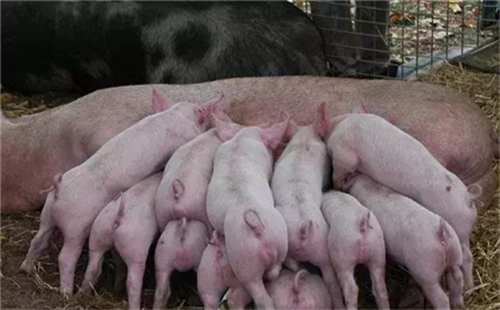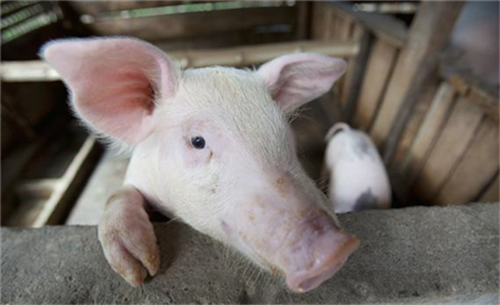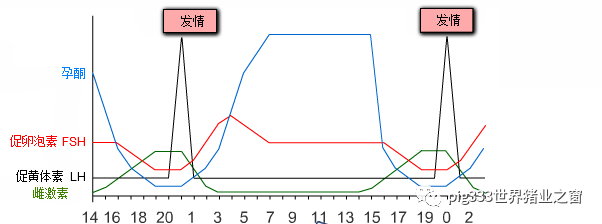The management plan of sows entering the delivery room for 49 days is really useful!
49 days in delivery room
It means that the prenatal sows are reared for one week, the lactation period is 28 days, the piglets continue to be reared for a week (35 days) after weaning, and the piglets are washed and sterilized for one week after they are transferred away. In order to facilitate the operation of the breeders, we have sorted out the weekly tasks and key points of the delivery room, which is simple and clear, and it is convenient for the slightly educated staff to operate.
First week
1. Task: Flushing, disinfection, empty house
two。 Schedule:
The first day: clean up the leftovers in the trough, tidy up the facilities and tools in the house, and prepare for flushing.
The second day: rinse clean, in addition to the net bed, the floor, focus on incubator, paving board, sow material trough, pig drinking fountain.
Day 3: disinfection. It is divided into three steps: the first step is spray disinfection, using 5% caustic soda solution; the second step is to soak the incubator board in 5% caustic soda solution for 4 hours; the third step is to put all the items in the house after washing and disinfection into the house and fumigate with chlorotoxin.
Day 4: open the window of the empty house to make it dry as soon as possible. Workers can be off duty during this period, the day before entering the pig, prepare a week to add medicine and lactation sow feed.
The second week
1. Task: feed pigs and prepare for delivery.
two。 Date arrangement
The first day: the sow goes to bed, after the sow goes to bed, take the pig spray disinfection once (the sow rinses thoroughly before going to bed).
The second day: check the condition of sows and formulate prenatal care measures, paying special attention to signs of mastitis.
The third day: keep the temperature in the house appropriate, prepare delivery equipment such as delivery equipment, emergency medicine, heating lamp, stove, etc., and check the milk discharge of sows before leaving work every day to determine whether it is about to give birth.
3. Temperature control:
At first, it is close to the pregnancy house, and then it transitions to the appropriate 18-22 degrees.
4. Feed:
Feeding medicated feed, the daily feeding amount is determined according to the number of days close to the delivery period, and the feed reduction begins three days before delivery, with a reduction rate of one kilogram per day.
5. Delivery:
For delivery of parturient sows, all operations shall be carried out in accordance with the operating rules.

Week 3 (first week of birth)
1. Task: delivery and postpartum care
two。 Key tasks:
(1) allow all newborn piglets to eat enough colostrum within one hour after birth.
(2) when giving birth, there must be special care, and strictly in accordance with the operating rules.
(3) put it into the prepared incubator after birth, and the temperature of the piglet lying in the incubator is about 32-34 degrees.
(4) combine nests and foster care on the day after delivery, and distribute sows and piglets reasonably (according to physical strength and the amount of breast milk).
(5) supplementation of iron and selenium within three days after delivery.
(6) Piglet is not allowed to lie outside the incubator. When there is sufficient manpower, every breast-feeding should be monitored.
(7) No sows are allowed to accumulate feces on the birth bed.
(8) avoid dampness in the delivery room, do not allow water leakage anywhere, and stick to it.
3. Feed:
According to the fat and appetite of sows, no or less feeding on the postpartum day, 1-2 kg can be fed the next day, and then 0.5 kg will be increased every day, gradually increasing the feeding amount to the normal feeding amount on the seventh day.
4. Temperature control:
In this stage, the temperature of piglets is mainly controlled, and the temperature of sows is taken into account.
Fourth week (second week of childbirth)
1. Task: normal feeding of mothers and cubs
two。 Focus of work
(1) the temperature of the pig incubator is gradually reduced to 28-30 degrees, which can be solved by changing the watts of the baking lamp, the height of the chandelier and the size of the vent of the incubator.
(2) focus on increasing feed intake of sows so as to improve lactation performance.
(3) begin to train piglets to feed (either suckling feed or sow feed).
(4) replace the unclean cushion of piglet incubator.
(5) pay attention to underfed piglets and sick piglets in the herd every day, and deal with them in time.
3. Feed:
Increase from three meals to four meals, and feed pigs in the cool morning and evening in summer to increase feed intake.
4. Temperature control:
It is better to keep the temperature at 18-22 degrees. If it exceeds 25 degrees, open the window for ventilation or use a fan so as not to affect the appetite of the sows.
Fifth week (third week postpartum)
Basically the same as the fourth week, the temperature of the incubator of piglets decreased by 1-2 ℃. Remove the lamp when the temperature is high. Classical swine fever vaccine was injected 21 days after delivery.
The sixth week (the fourth week after delivery)
1. Task: preparation for weaning
two。 Key work
(1) Piglet incubator is sprinkled with heating facilities to adapt to post-weaning conditions.
(2) all piglets will eat food, and a few will not eat artificial forced feeding.
(3) the well-developed piglets were weaned ahead of time, and the sows with good milk were given up to low-weight or sick piglets to ensure uniform weaning.
(4) rinse the ground two days before weaning to maintain the air quality in the house during weaning. (no flushing after weaning)
(5) prepare the stove for heating piglets after weaning.
3. Feed:
The sows began to lose weight on the third day before delivery, from 1-1.5 kg per day to 3 kg at weaning. Piglets are fed special weaning feed for weaning pigs.
4. Temperature control:
The temperature at weaning was 1-2 ℃ higher than that before weaning.
The seventh week (one week after weaning)
1. Task: feeding weaned piglets
two。 Focus of work
(1) the resting temperature was 1-2 ℃ higher than that before weaning. Add heating facilities (such as infrared lights, etc.) if necessary.
(2) the feed of weaned pigs remains unchanged and eats freely.
(3) pay attention to observation, found that will not eat piglets picked out in time, artificial feeding or let sows take a few more days.
(4) to make preparations for the transition.
Note: due to the limited space, the above introduction is not very detailed, but with the implementation of the above scheme, it is not a difficult problem for the weaning survival rate of qualified piglets in the delivery room to reach or exceed 95%.
- Prev

A brief discussion on the cracks in the concrete Pool structure in the Construction of Pig Farm (2)
A brief discussion on the cracks in the concrete Pool structure in the Construction of Pig Farm (2)
- Next

Hormone management (III)-using exogenous progesterone to control the time of estrus in sows
Hormone management (III)-using exogenous progesterone to control the time of estrus in sows
Related
- On the eggshell is a badge full of pride. British Poultry Egg Market and Consumer observation
- British study: 72% of Britons are willing to buy native eggs raised by insects
- Guidelines for friendly egg production revised the increase of space in chicken sheds can not be forced to change feathers and lay eggs.
- Risk of delay in customs clearance Australia suspends lobster exports to China
- Pig semen-the Vector of virus Transmission (4)
- Pig semen-the Vector of virus Transmission (3)
- Five common causes of difficult control of classical swine fever in clinic and their countermeasures
- Foot-and-mouth disease is the most effective way to prevent it!
- PED is the number one killer of piglets and has to be guarded against in autumn and winter.
- What is "yellow fat pig"? Have you ever heard the pig collector talk about "yellow fat pig"?

